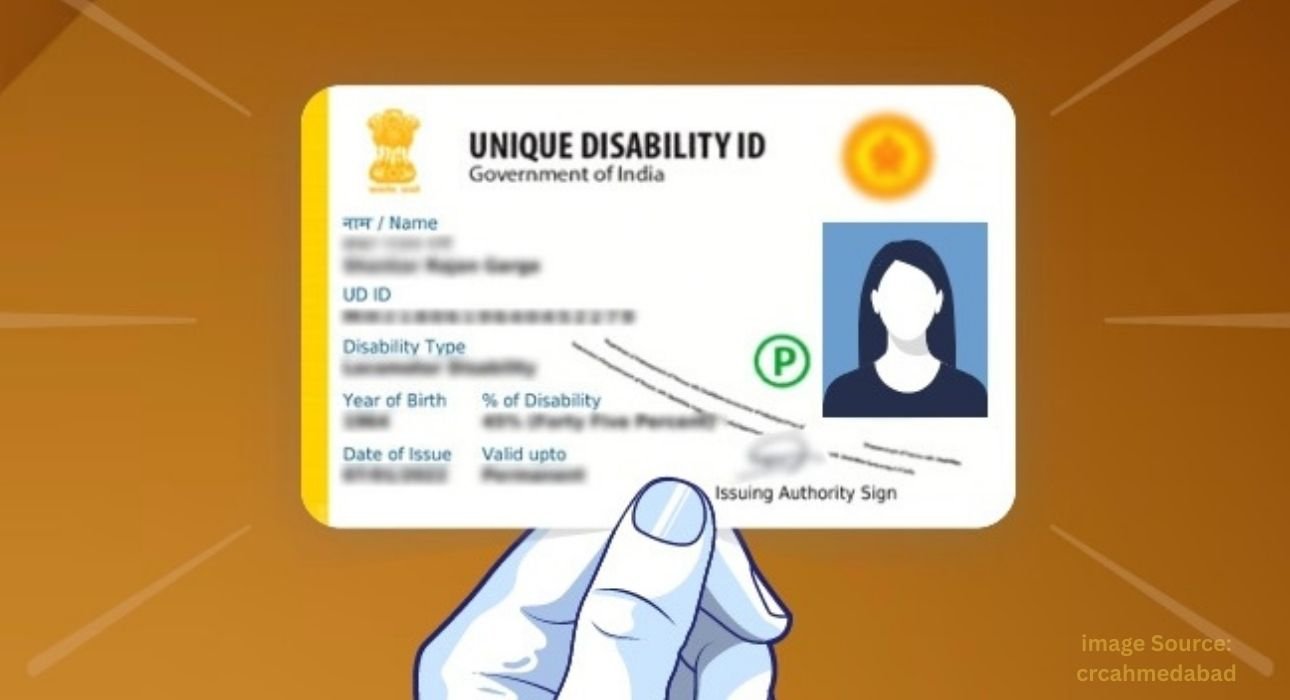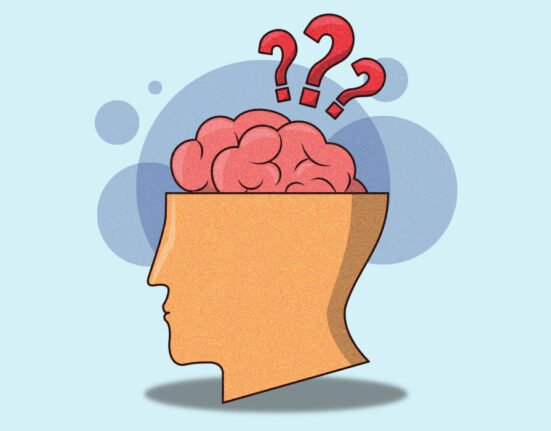UDID Card (Unique Disability ID Card ) is a high-level initiative by the Department of Empowerment of Persons with Disabilities (DEPwD), Ministry of Social Justice and Empowerment, Government of India. The primary aim of this program is to establish a nationwide, centralised database of people with disabilities and to offer a lifelong, uniform identification card, which can be transferred between states.
Before this shift, PwDs had to carry a set of documents for verification each time they sought benefits, and certification varied state-wise. The UDID card addresses these issues by providing one digital and physical document of identity that simplifies the process of verification and thus makes social welfare schemes and services more streamlined to access.
Apart from this, it enables easier monitoring and disbursement of entitlements by the government. The reason that the database is electronic is that alterations to data, such as address and contact information, can be done over the web and thus reduce frequent visits to the government offices.
Read More: UDID in India: Streamlining Identity and Access for Persons with Disabilities
Eligibility Criteria
To be eligible for a UDID card, a person must be an Indian citizen with a condition that is one of the 21 benchmark disabilities as classified in the Rights of Persons with Disabilities (RPwD) Act, 2016. These include a wide range of physical, intellectual, sensory, and mental health disabilities such as locomotor disability, visual impairment, intellectual disability, hearing impairment, autism spectrum disorder, cerebral palsy, mental illness, multiple disabilities involving deaf-blindness, and several rare and chronic neurological disorders.
Interestingly, the disability needs to be attested by a legally authorised medical board constituted by the government and must be of 40%The minimum 40% severity criterion is to grant benefits to the people with low income who need constant support to live independent and dignified lives. Even the certification process includes a proper clinical assessment, and the health of the candidate must be stable or recurring in nature.
Read More: Art Workshop For Persons With Disabilities (PWDs), Organised By NIMHANS
Documents Required for UDID Application
The applicant must be duly prepared with all the documents required before initiating the process of application for UDID. The documents mentioned below are normally required unless stated otherwise, whether applying for a new card or a modification of an existing one. The documents comprise a recent passport-sized photograph, a disability certificate signed by a medical officer, and an Aadhaar card, Voter ID card, or PAN card as proof of identity.
In addition, proof of residence is also required, which could be a ration card, electricity or water bill, or Aadhaar card in case of a change of address. Proof of date of birth is required and can be provided via a birth certificate, school certificate, or Aadhaar card. If applicants apply for financial aid or scholarships, authorities may also request an income certificate.
Phone numbers, like a mobile number and email ID, are necessary for OTP verification and communication relating to the application. Applicants must carefully scan and upload all documents in PDF or JPG format to avoid rejection or delays from submission errors. The applicants should make sure that the scanned documents are clear, not cropped, or unclear to avoid rejection or delays.
Read More: The Role of the India Autism Centre in Making Health Coverage a Reality
Step-by-Step Online Application Process
The process for UDID application is largely online and has been made easy to use, although some find it a bit complicated because of the stages of verification. First, visit the official website at https://www.swavlambancard.gov.in. On the home page, click on “Apply for Disability Certificate and UDID Card” to start the registration process. This involves transcribing general personal details such as full name, date of birth, gender, mobile number, email ID, and Aadhaar number into the system if available.
During registration, candidates must fill out the complete application form, including their disability type and degree, residence, contact information, and other socio-economic details. The second component involves uploading documents as per the directions given by the portal. This also includes a scanned copy of disability certificate, proof of address, proof of identity, and a passport photo.
Once all these are uploaded and verified, the user may proceed and apply, and then an application ID is generated. This is to be retained and utilised in tracking the application status under the “Track Your Application” tab on the home page of the portal. Applicants are requested to thoroughly check all the entries before submission to avoid post-submission edits that would entail reapplication or by-hand adjustments. Severity or more to avail of most government schemes.
Read More: Understanding Mental Health Governance in India
Medical Evaluation and Certificate Issuance
After the online form has been submitted, the application is forwarded to the Chief Medical Officer (CMO) or the respective authority of the district of the applicant. In other cases, when the applicant does not yet have a disability certificate. They are called for a medical examination at the nearest District Disability Rehabilitation Centre (DDRC) or a government-authorised hospital. A medical board of specialists in the relevant fields typically conducts the examination, assessing the applicant to assign a certified disability percentage based on pre-set guidelines.
For individuals already holding a valid disability certificate, verification is usually expedited. But the medical board can request re-verification if the document is outdated, lacks specificity, or the percentage of disability is unclear. Once the board approves the case, officials update the details in the centralised system and forward them for card generation. The verification process is essential and usually leads to delays, particularly where there is poor health cover or the absence of staff.
Download and Print the UDID Card
After officials approve and process the application, candidates receive an email or SMS confirming that their UDID card has been issued. Applicants can then download the card from the official UDID portal using their login credentials. The digitally downloaded UDID card is signed and can be used to access various government and public services. Even a hard copy of the UDID card is mailed by post to the registered address of the applicant, but the time it would take to reach the recipient would be subject to postal services within a given region and logistical circumstances.
The UDID card has a 16-digit unique identification number, along with basic information such as the individual’s name, photo, category and percentage of disability, and QR code. The QR code allows the government authorities or service providers to easily verify the individual’s disability credentials without other documents, thus maximising accessibility and efficiency.
Advantages of the UDID Card
The UDID card is a key to unlocking a broad spectrum of government concessions, subsidies, and incentives to facilitate individuals with disabilities and bring him or her into the mainstream of social and economic life. These include reservation quotas in education and in government service, concessions in railway and airline travel, exemption of income tax, and availability of appliances and equipment under the ADIP scheme.
The card also makes one eligible for scholarships, skill training, affordable housing, and priority allocation under government housing schemes. The UDID card serves as the main document of entitlement in states that provide disability pensions or concessional public transport. By eliminating several overlapping documents, the card streamlines the user experience, particularly at government institutions and delivery points. Things to Keep in Mind During Application
While the online system aims to provide convenience, additional safeguards are necessary to ensure a smooth and timely application process. Applicants must double-check that all uploaded documents are recent, legible, and match the information provided in the form. Even slight differences between name spellings or between address proofs and Aadhaar information can result in application rejection.
Though Aadhaar is not compulsory, it eases identification at some future point in time and makes services simpler to avail through the connection with the UDID system. If the application is rejected, the applicant usually receives the reason via SMS or email and can reapply once the issues are resolved. It is advisable to keep electronic as well as hard copies of all documents uploaded and check the application status from time to time so as not to miss out on critical updates. Delays usually occur during medical verification, especially when appointments are missed or medical records are unavailable.
Read More: Does mental illness affect economic development?
Offline and Assisted Application Options
To acknowledge the fact that most individuals with disabilities, particularly from rural or economically backwards locations, would not be able to access digital infrastructure, the government has made offline and convenience-based application channels. The candidates may go to Common Service Centres (CSCs) present in most villages and towns. Where form-filling and document upload assistance is provided by trained experts.
Equally, one may visit the District Disability Welfare Offices, NGOs catering to disabled communities, or the offices of the State Disability Commissioners for advice and assistance. In addition, mobile UDID camps are sometimes set up by local authorities to reach people residing in remote places or who have severe/multiple disabilities, so that no one is left behind during digitisation.
Read More: From Stigma to Support: The Role of NGOs in Mental Health Advocacy
Conclusion
The UDID card is a major milestone towards India’s journey of social inclusion, equity, and digital empowerment of the disabled people with disabilities. By merging identification, disability, and entitlement into one authentic document. It simplifies administrative barriers and facilitates easier access to schemes that can alter the life trajectories of individuals. While the system still has some implementation difficulties, mostly in terms of medical certification, local knowledge and access. The supported routes and online portal have gone a great way in making it easy to use. With awareness, careful planning, and support from the government and civil society. Eligible individuals can obtain this card to access the legal privileges and facilities they are entitled to.
Read More: AI Chatbots for People with Disabilities: Bridging the Accessibility Gap
FAQS
1. Why is the UDID card considered important for persons with disabilities in India?
The UDID card is important because it serves as a unified document for accessing various government schemes and policies with minimal paperwork.
2. How does the offline procedure for UDID card procurement work?
The process requires obtaining a physical form and completing it manually. Submit it with the necessary documents to the relevant state or district authority. Many officials review the application before the applicant receives the UDID card.
3. What are the certain drawbacks of UDID cards?
The main drawbacks are the complex procedures and the public’s lack of awareness about these provisions.
References +
Department of Empowerment of Persons with Disabilities (DEPwD). (n.d.). Unique Disability ID (UDID) Project. Ministry of Social Justice and Empowerment, Government of India. Retrieved July 21, 2025, from https://www.swavlambancard.gov.in/
Ministry of Social Justice and Empowerment. (2016). The Rights of Persons with Disabilities Act, 2016. Government of India. Retrieved from https://disabilityaffairs.gov.in/upload/uploadfiles/files/RPWD%20ACT%202016.pdf
Press Information Bureau. (2016, December 29). Cabinet approves setting up of the Unique ID for Persons with Disabilities. Government of India. Retrieved from https://pib.gov.in/newsite/PrintRelease.aspx?relid=155580
National Centre for Promotion of Employment for Disabled People (NCPEDP). (2018). Understanding the Rights of Persons with Disabilities Act, 2016. Retrieved from https://ncpedp.org/
Department of Empowerment of Persons with Disabilities (DEPwD). (2023). Guidelines for the Issue of Disability Certificate and UDID Card. Retrieved from https://www.swavlambancard.gov.in/policies-guidelines
Common Service Centres Scheme. (n.d.). CSC services in disability support. Digital India Programme. Retrieved July 21, 2025, from https://csc.gov.in/
Ali, S., & Mishra, A. (2022). Digital Inclusion and Accessibility: The Case of the UDID Card in India. Journal of Disability Policy Studies, 33(2), 101–113. https://doi.org/10.1177/10442073221078945
Ghosh, A., & Roy, S. (2021). Barriers and Enablers in Disability Certification in India: A Review of the UDID Scheme. Indian Journal of Social Work, 82(4), 489–504.













Leave feedback about this